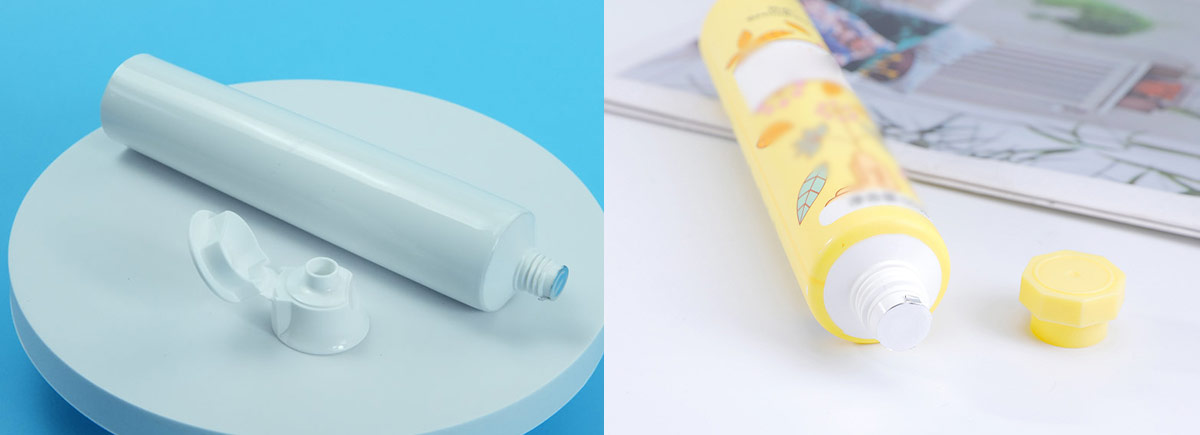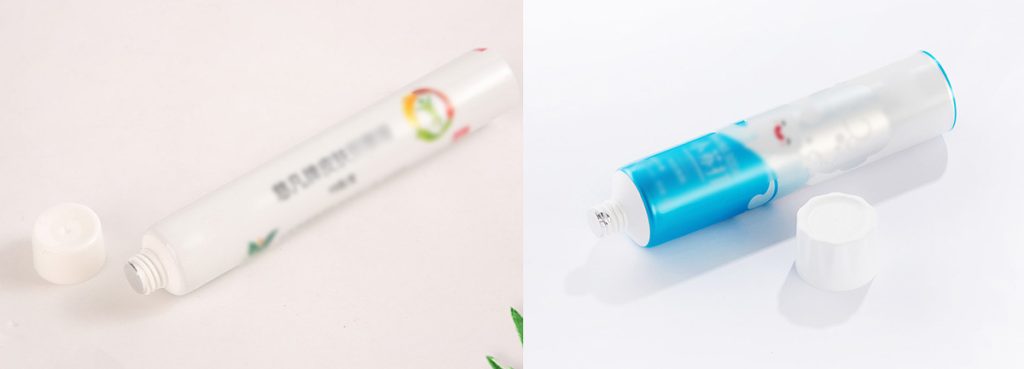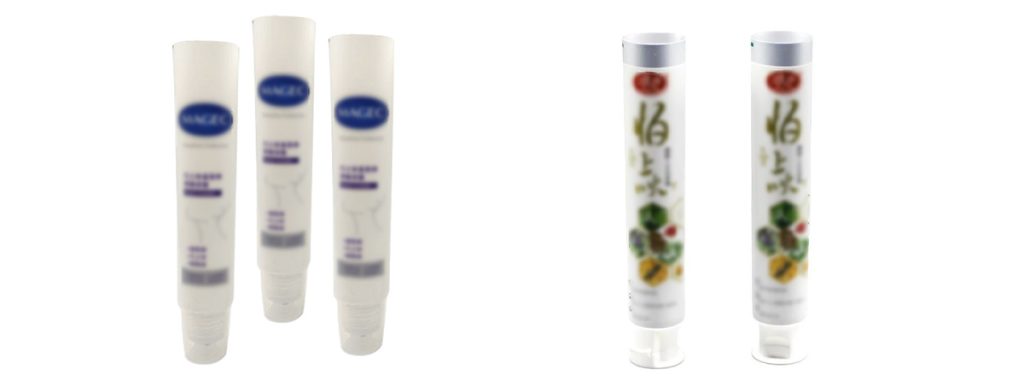

PIR(Post-Industrial Recycled) materials play a crucial role in reducing waste during lami tube production. Manufacturers collect these materials directly from industrial processes, ensuring high quality and consistency. By reintegrating production scraps, companies keep waste out of landfills and minimize the need for virgin plastics. The use of PIR also lowers processing costs since it requires less cleaning than post-consumer recycled content. Lami tube making machines benefit from this approach, supporting more efficient and sustainable operations in the packaging industry.
Table: PIR Materials Support Sustainability in Packaging
Benefit/Challenge Description High Quality and Consistency Collected directly from manufacturing, leading to better quality control. Reduces Industrial Waste Keeps production scraps out of landfills. Lower Processing Costs Requires less cleaning and sorting than post-consumer recycled materials. Limited Availability Dependent on manufacturing waste, restricting supply. Less Impact on Circular Economy Does not encourage consumer recycling habits as it never reaches consumers.
Key Takeaways
- PIR materials reduce waste by reusing production scraps, keeping them out of landfills and supporting eco-friendly practices.
- Using PIR lowers processing costs since it requires less cleaning than post-consumer recycled materials, making production more efficient.
- Laminated tubes made with PIR materials maintain high quality and durability, ensuring they protect products effectively from spoilage.
- Integrating PIR into lami tube production supports a circular economy by minimizing the need for virgin plastics and promoting sustainable resource management.
- Companies that adopt PIR materials can attract environmentally conscious consumers and gain a competitive edge in the packaging industry.
PIR and Lami Tube Production
What Is PIR?
PIR, or post-industrial recycled material, originates from industrial film waste. Manufacturers collect scraps from plastic production processes and transform them into durable, high-performance films and bags. These scraps never reach consumers, which ensures a consistent quality for recycled resins.
- PIR products result from reusing manufacturing and production scraps.
- Industrial film waste is processed into recycled resins for new packaging applications.
Lami tube production relies on PIR to create sustainable packaging solutions. By using PIR, companies reduce the amount of waste generated during lami tube manufacturing. This approach supports the development of eco-friendly packaging without compromising product integrity.
Lami Tubes Overview
Lami tubes, also known as laminated tubes, serve a wide range of industries. Their multi-layered structure provides excellent barrier properties, making them ideal for sensitive products.
Note: Laminated tube packaging protects contents from moisture, oxygen, and light, which extends shelf life.
Common applications include:
- Cosmetics & Personal Care: Face creams, lotions, gels, toothpaste
- Pharmaceuticals: Ointments, medicated creams
- Food Industry: Condiments, sauces, honey
Lami tube production uses lami tube making machine to ensure precise layering and sealing. These machines handle PIR materials efficiently, maintaining high standards for packaging quality.
Role in Waste Reduction
Lami tube production benefits from PIR by reducing the demand for virgin plastics. PIR materials conserve natural resources and require less energy than new plastics.
- PIR eliminates the need for raw material extraction.
- Production costs decrease, and environmental impact lessens.
By integrating PIR into lami tube production, manufacturers keep industrial waste out of landfills. The use of PIR in laminated tube making machine supports a circular approach, where scraps become valuable resources. This process minimizes the environmental footprint of the packaging industry and encourages sustainable practices.
Waste Reduction Mechanisms
Recycling Process
Lami tubes industries achieve significant waste reduction by integrating post-industrial recycled materials into the laminated tube production. The recycling process for PIR materials differs from that of post-consumer recycled content. PIR materials originate from manufacturing waste, which allows companies to maintain strict quality control. Workers collect plastic regrinds and scraps directly from factory floors. These materials undergo minimal cleaning and sorting, which reduces processing costs and increases efficiency.
In contrast, post-consumer recycled materials require extensive cleaning and sorting. Consumer waste often contains contaminants, which complicates plastic recycling. The streamlined process for PIR materials enables manufacturers to reintegrate recycled resins into lami tube production with fewer steps. This approach supports circularity by keeping plastic waste within the industrial cycle and out of landfills.
Tip: Using PIR materials in lami tube making machine improves recyclability and reduces the environmental impact of laminated tube packaging.
Environmental Impact

The use of PIR materials in lami tube production delivers several environmental benefits. Companies enhance circularity by reusing plastic regrinds and minimizing the need for virgin plastics. Green laminated tubes, composed of 95% PBL and 5% EVOH, offer improved recyclability while maintaining product quality. The adoption of PIR materials reduces the overall environmental footprint of packaging operations.
| Environmental Impact | Description |
|---|---|
| Contribution to Sustainability | The use of PIR materials enhances product circularity and promotes eco-friendly practices. |
| Reduced Environmental Footprint | Green Laminated Tubes are designed to minimize waste and improve recyclability. |
| Material Composition | Composed of 95% PBL and 5% EVOH, ensuring lower environmental impact while maintaining quality. |
Manufacturers prevent plastic waste from entering landfills or incinerators by recycling factory scraps. This process supports the packaging sector’s commitment to sustainability and responsible resource management.
Comparison with Traditional Materials
PIR recycling offers clear advantages over conventional materials. Traditional lami tube production relies heavily on virgin plastics, which increases environmental impact and resource consumption. PIR materials, sourced from plastic regrinds and industrial waste, reduce the demand for new raw materials.
- PIR recycling primarily deals with factory waste, which does not tackle the larger issue of plastic pollution from consumer use.
- The shift towards post-consumer recycled plastics is crucial as it involves materials that have been used and discarded by consumers.
- PCR recycling helps divert plastics from landfills and oceans, effectively preventing landfill and incineration.
Manufacturers who use PIR materials achieve greater circularity and recyclability in their packaging. The process generates less waste compared to traditional methods. Although PIR recycling does not address all sources of plastic waste, it represents a step forward in sustainable packaging. Companies continue to explore ways to combine PIR and PCR materials to maximize environmental benefits and improve the overall impact of lami tube line.
Manufacturing Process
Integration Steps
Manufacturers begin by collecting post-industrial recycled materials from production lines. They sort and process these materials to ensure quality and consistency. The next step involves blending PIR resins with virgin polymers to achieve the desired properties for laminated tube manufacturing. Operators feed this blend into a lami tube making machine, which forms the multi-layered structure. Each layer receives careful monitoring to maintain barrier performance and durability. This process supports sustainability and encourages innovation in packaging.
Tip: Consistent monitoring during integration helps maintain high standards for laminated tube quality.
Lami Tube Making Machines
A lami tube making machine plays a central role in the manufacturing process. These machines handle the precise layering and sealing required for laminated tube production. Modern equipment features advanced controls that allow operators to adjust parameters for different material blends. This flexibility supports the use of PIR materials and drives innovation in the industry. Manufacturers rely on these machines to produce tubes that meet strict quality and performance standards.
| Machine Feature | Benefit for PIR Integration |
|---|---|
| Advanced Controls | Adjusts for material variability |
| Automated Monitoring | Ensures consistent tube quality |
| Modular Design | Supports rapid innovation and upgrades |
Challenges and Solutions
Manufacturers face several challenges when incorporating PIR into laminated tube manufacturing. Material consistency can vary between batches, which affects processing. Some lami tube making machines may require adjustments to handle recycled content. Companies address these issues by investing in quality control systems and staff training. They also collaborate with equipment suppliers to develop machine upgrades. These efforts foster innovation and ensure smooth integration of PIR materials.
Note: Ongoing research and development help manufacturers overcome technical barriers and improve sustainability.
Benefits
Sustainability
Manufacturers prioritize sustainability in lami tube manufacturing by using PIR materials. They reduce landfill waste and lower the carbon footprint of packaging operations. Companies choose green laminated tubes for their sustainable composition and high recyclability. These tubes support a circular lifecycle, keeping materials in a closed manufacturing loop. The use of 100% recyclable materials ensures that packaging remains future-ready. By minimizing the need for virgin plastics, manufacturers promote eco-friendly packaging and encourage environmentally conscious packaging practices. The adoption of PIR materials leads to a reduced environmental footprint and supports a zero-waste future.
Companies that invest in sustainability gain a competitive edge in the packaging industry. They meet consumer demand for 100% recyclable and future-ready packaging solutions.
Cost Efficiency
PIR materials offer significant cost savings for manufacturers. They require less processing than post-consumer recycled content, which improves efficiency. The closed manufacturing loop allows companies to reuse production scraps, lowering material costs. Green laminated tubes provide 100% recyclable options that reduce expenses related to waste disposal. By integrating PIR with post-consumer recycled materials, manufacturers optimize resource use and streamline packaging operations. The result is a more cost-effective and sustainable approach to packaging production.
| Cost Efficiency Benefit | Description |
|---|---|
| Lower Material Costs | Reuse of industrial scraps reduces expenses. |
| Improved Production Efficiency | Less sorting and cleaning needed. |
| Reduced Waste Disposal Fees | High recyclability cuts landfill costs. |
Shelf Life
Flexible packaging with high-barrier films extends product shelf life. Green laminated tubes limit exposure to oxygen, moisture, and contaminants. This protection prevents spoilage and reduces consumer food waste. Packaging with 100% recyclable post-use features supports a circular lifecycle and future-ready packaging standards. Manufacturers achieve high recyclability and maintain product quality. The extended shelf life of packaging leads to less waste in the industry and supports sustainability goals.
- Flexible packaging keeps products fresh longer.
- High-barrier films prevent spoilage and contamination.
- Extended shelf life reduces food waste and supports a zero-waste future.
Conclusion

PIR materials drive lami tube production by reducing waste and lowering environmental impact. Manufacturers and the packaging industry benefit in several ways:
- Businesses divert industrial waste from landfills, supporting sustainability.
- Companies experience lower disposal costs and consistent material quality.
- Brands attract environmentally conscious consumers with sustainable packaging.
The future of packaging will rely on innovative solutions like PIR, helping industries meet rising demand for responsible and efficient production.
FAQ
What Are the Main Benefits of Using PIR Materials in Lami Tube Production?
Manufacturers use PIR materials to reduce plastic waste and improve sustainability. These materials help companies lower costs and maintain high product quality. PIR materials also support efficient recycling processes, keeping plastic scraps out of landfills and minimizing environmental impact.
How Do PIR Materials Affect the Quality of Lami Tubes?
PIR materials provide consistent quality because they come from controlled industrial sources. Companies blend PIR with virgin plastic to create strong, durable tubes. This process ensures that the final product meets industry standards for barrier protection and shelf life.
Can Lami Tube Making Machines Handle PIR Materials Efficiently?
Modern lami tube making machines feature advanced controls that adjust for material variability. Operators monitor plastic blends to maintain tube quality. These machines support rapid innovation and allow manufacturers to integrate PIR materials without sacrificing performance.
What Is the Difference Between PIR and PCR Materials in Packaging?
PIR materials originate from industrial plastic waste, while PCR materials come from consumer-used plastic. PIR offers higher consistency and easier processing. PCR helps address broader plastic pollution by recycling post-consumer plastic, but it requires more cleaning and sorting.
How Does PIR Integration Support the Circular Economy in the Packaging Industry?
Manufacturers collect and reuse plastic scraps from production lines. This practice keeps plastic in a closed loop, reducing the need for virgin plastic. PIR integration supports circularity by minimizing waste and promoting responsible resource management in packaging operations.
